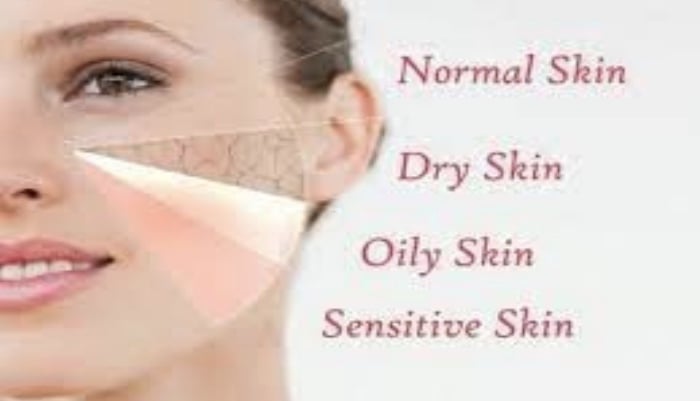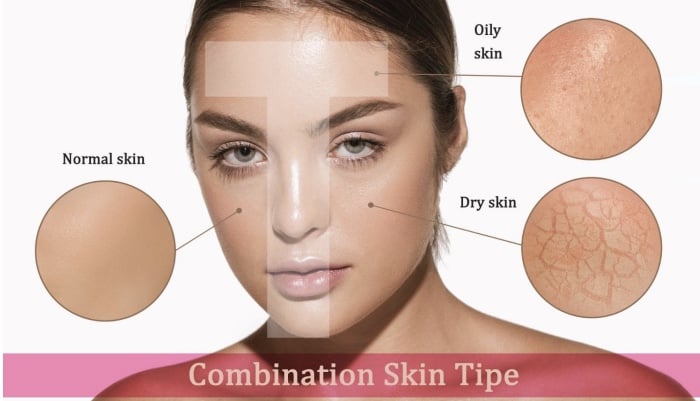Skin is the largest organ in the body and it is one of the few organs visible externally. So, we take better care of it, right? Have you ever noticed how some products work great for your sister or friend but they make your skin worse? Although every skin is unique and responds to a variety of products in different ways, there are 5 types of skin. These skin types are based on many factors like how much water content your skin has, how much oil is produced, and how sensitive it is to any product.
Are you wondering why it is important to know your skin type? Well, your skin will improve a lot with you using skincare products made specifically for your skin type and your makeup will also look better and last longer when you use the right makeup products. But how to know which skin type you have? You must already have a hint of your skin type. We are going to guide you about 6 simple ways to know your skin type in this article.
Skin Types and Their Features

Let us first know the general characteristic of different skin types to give you an idea of which one you could have.
1. Dry Skin
Dry skin, as the name shows, looks dehydrated if it is not moisturized enough. There is decreased production of natural oils in dry skin. Dry skin appears tight, firm, dull, and desiccated. It is more prone to the obvious appearance of fine lines and wrinkles. But the good thing is, there is decreased incidence of acne breakouts in dry skin.
Moreover, diet affects dry skin. You will notice a clear change in the texture of your dry skin if you do not drink enough water, or use alcohol, or diuretics.
2. Oily Skin
Oily skin is called so because of the excess production of natural oils that make skin look greasy. The good thing about oily skin is it appears glowing and supple. It looks younger and fresh because there is a decreased appearance of fine lines on oily skin.
However, the excess oils open the pores, can clog them, and make people with oily skin more prone to acne. There is also an increased formation of white and blackheads in oily skin. Here are
ways to remove blackheads
if you have any.
3. Combination Skin
Combination skin is the combination of two skin types, either dry and oily or normal and oily. In most cases, T zones are oily while cheeks are dry and it is opposite rarely.
So, if you notice that your T zone stays shiny while your cheeks look flaky, this is your skin type. Moreover, combination skin is affected by changes in diet, season, hormones, and stress.
4. Sensitive Skin
Sensitive skin can be of any type like oily, dry, combination, or normal. But the catch is it gets irritated by a little change in diet, taking spicy or oily meals, and trying out new products. Sensitive skin overreacts to several ingredients and feels itchy, irritating, and red.
However, it is up to you to determine which products your skin reacts to and it is an effort-taking task.
5. Normal Skin
Normal skin is best of all. It is not too dry and not too oily. So, people with normal skin enjoy the benefits of both like less acne, smooth poreless skin texture, plumpness, and young-looking skin. However normal skin can also get oily or dry when it is not cared for.
You can follow this
Best skin care routine for people in their 20s
.
Easy Ways To Know Your Skin Type

Now you have an idea of which skin type your skin can be, let us find out the exact type by using any of these 6 methods.
1. Simple Cleansing and Waiting
The wait-and-watch method is the easiest of all the methods as you do not have to do anything. Thoroughly cleanse your face with a mild face wash and wait for 30 minutes. Your skin will begin to look greasy or matte. Then wait for another 30 minutes.
If the overall skin looks shiny and glowing, you have oily skin. If it looks patchy and feels tight, you have dry skin. If it looks oily in the T zone and dries on the cheeks, the combination is your skin type. However, if you do not note any particular change, you have normal skin.
2. Blotting Paper
This is the best method to know your skin type. Wash your face, let it dry, and wait for half an hour to allow your skin to produce oils. Then take a blotting sheet and pat it on your cheeks, forehead, and nose.
If you see that it is full of oil, your skin is oily. If the sheet is almost dry, your skin is also dry. If it is oily in some parts while dry in others, your skin is the combination. Lastly, if it has little amount of oil in all areas, your skin type is normal.
3. Observing How Your Skin Feels
As you know skin type affects the texture and smoothness of your face. You can observe your skin anytime to find out its type.
You can observe how your skin feels after hours of washing your face. Dry skin feels stretched and parched. Oily skin feels sweaty and greasy. Combination skin is in between the both. And sensitive skin gets irritation on a little change in your routine
4. Noticing the Texture of the Skin and Size of the Pores
Another easy method is the mirror method where you look at your skin closely to notice its texture. Dry skin has no visible pores and looks flaked or peeled. Combination skin looks plump and radiant but there will be large pores and black or white heads.
Normal skin has small pores and looks hydrated. Combination skin looks glowing in the T zone and matte in the surrounding areas. Lastly, sensitive skin looks red and feels itchy.
5. Checking Skin Elasticity
Oily skin has a greater amount of moisture and is more elastic to the touch. Dry skin has little hydration and less elasticity. So, you can pinch your skin to notice how elastic it is. Oily skin looks the same on pinching and rebounds back to its normal shape immediately while you will notice wrinkles or fine lines form on dry skin after pinching it.
6. Asking for Expert Advice
Skin types can change with age and by different hormonal or environmental factors. So, if you fail to determine your skin type even after all these at-home methods, simply get expert advice. Contact your dermatologists to know more about your skin.
Suitable Products or Different Skin Types

Coming to the point, why did we have to find our skin type? To get the most suitable products for ourselves, right? Here are some products that work well for these skin types.
For Dry Skin
Dry skin begins to peel off when it is not moisturized enough as there is decreased sebum production. So, you should use rich nourishing, and moisturizing creams to deal with dryness. Ingredients like hyaluronic acid, ceramides, and glycerin work best for dry skin. Also, opt for products that contain no alcohol or fragrance as it might worsen your skin.
Essential oils can be your partner as well. Additionally, people with dry skin should avoid hot showers because hot water strips the skin of its natural oils.
For Oily Skin
You might be thinking you need no moisture when your skin already produces enough oil. But that is the wrong approach. Oily skin also needs hydrating and nourishing products to balance the production of oils and maintain the smooth texture of the skin.
So, choose lightweight moisturizers in gel form with a non-comedogenic formula to moisturize the skin without making it feel greasy. Additionally, gentle chemical or enzymatic exfoliates help to remove build-up and prevent clogging of the pores and thus acne.
For Combination Skin

Finding the right products to deal with two skin concerns at once can be tricky. So, you can either get separate products for your T zone and cheek area or make an effort to find a product that suits both areas of skin without being heavy on one and insufficient for the other.
Oil-free moisturizers in gel or cream form are great for combination skin. You can also adjust the amount of moisturizer for the T zone and cheek area. Additionally, gentle moisturizing cleansers and exfoliating agents are recommended.
For Sensitive Skin
Sensitive skin can be of any type but not all products suit it. So, if you already have the products that suit you, keep using them consistently. However, if you are a beginner in skincare and want to find some compatible products, begin with hypoallergic products.
You can begin by finding cleansers or lotions that contain no artificial fragrance, sulfates, mineral oils, paraben, phthalate, or other potentially irritating ingredients. Also, do not forget to do a patch test before applying any product all over your skin. Here are some
body lotions for sensitive or dry skin
.
For Normal Skin
Lastly, normal skin is easiest to maintain but we often take it for granted and skip skincare altogether. You can focus on high-quality cleansers that efficiently remove dirt, bacteria, and other impurities from the skin, moisturizers that strengthen the skin barrier, and sunblock to protect your skin from damage.
There is no need for extravagant products for normal skin. You can keep it simple and enjoy the blessing of good skin.
Conclusion
The simple methods to find your skin type includes cleansing and waiting method, blotting sheet method, feeling the texture method, skin pinch test, and finally asking a dermatologist. Once you know your skin type, it is time to get the products specifically made for your skin because all skin types need to be taken care of. You can keep it basic with cleanser, moisturizer, and sunscreen or add gentle exfoliating products, serums, and oils to your skincare routine.
Moreover, makeup trends keep changing. So, you should pay attention to buying skin-friendly cosmetics that are not full of chemicals, fragrances, and comedogens.

 By myulikeadmin
By myulikeadmin



